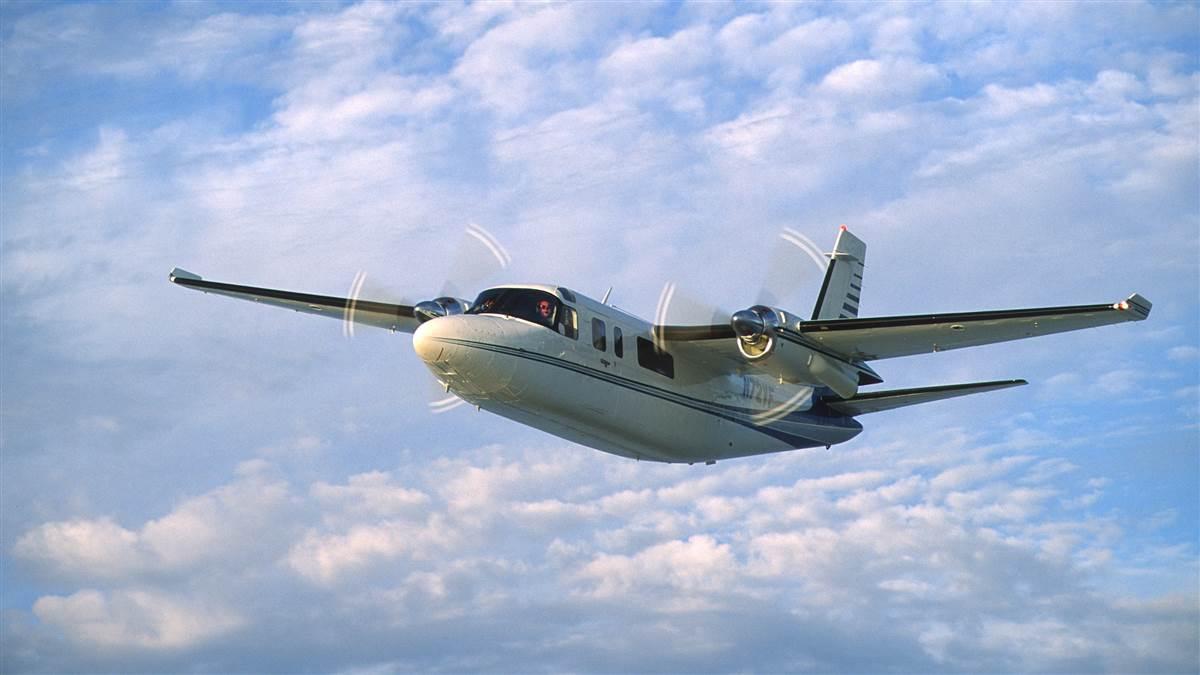Quick Look Commander 690
Roomy, fast, efficient, and unique turboprop

The Twin Commander’s huge wing is known for stability, short-field performance, and even aerobatic capabilities—which were made famous by Bob Hoover’s 500S Shrike Commander.
By the mid-1960s, piston Twin Commanders had grown to a maximum takeoff weight of 8,500 pounds. Even with two 380-horsepower geared, supercharged Lycomings, the airplanes were simply underpowered. By this time, the Beech King Air was making its mark, and turbine power was exactly what the Twin Commander needed.
Models 680 and 681 were the first Turbo Commanders and used 575-shaft-horsepower Garrett TPE-331s. Introduced for the 1972 model year, the 690 had the 717-shp -5 version of the Garrett powerplants and an extended wing center section that provided more fuel capacity. The 690 saw cruise speeds of 280 KTAS at FL180 on about 600 pounds/hour. Perhaps the best part is that as service time with the Garrett (now Honeywell) engines marched onward in many types of airplanes, the TBO has stretched out to 5,400 hours.
Model nomenclature is tough to follow. There are 690A, -B, -C (marketed as the Jetprop 840), and -D (Jetprop 900) models. The -A has a redesigned cockpit and more pressurization. The -B has improved soundproofing and a lavatory; -C models (under new owner Gulfstream) offered 840 shp, an additional wing stretch, outboard wet-wing fuel tanks, and modest-sized winglets. The -D models have an extended rear cabin and improved pressurization.
Twin Commanders utilize hydraulically powered landing gear, flaps, brakes, and nosewheel steering. The main landing gear retract aft while rotating 90 degrees, similar to World War II Curtiss P–40 and Vought Corsair fighters. Floor-mounted yokes have ram’s-horn handles.
The TPE-331 is of a single-shaft design, which means they require a lot of force to get things spinning on startup. Batteries take a beating during starts, so most operators seek out ground power carts for assistance. The single-shaft design also makes the Honeywell engines a massive drag-producer in the event of engine failure. To counter that, a negative torque sensing system will bring the propeller to near feather automatically, to significantly reduce drag. With its big propellers and availability of beta and reverse thrust, the 690 can get stopped in a hurry. Landing distance over a 50-foot obstacle is 2,100 feet.
Twin Commanders earned a reputation as AD magnets for wing spar corrosion issues. By now every airplane in the field should be fixed. If not, it’s a six-figure job. Other big-ticket items are flap cable and pulley wear that resulted in an AD, as well as a tail beef-up. Oh, and don’t forget the 22 rubber fuel bladders that need periodic replacement.
Twin Commander Aircraft LLC holds the type certificate as well as many STCs and mods for the 690 series, such as glass-panel modifications and -10 engine upgrades. The -10 engine mod holds the rated 717 shp to a much higher altitude, allowing the 690 to exceed 300 KTAS on as little as 500 pounds/hour.
Vref values for the 690 series range from $290,000 for a 1972 model to $1.1 million for a 1985 690D (Jetprop 900).


